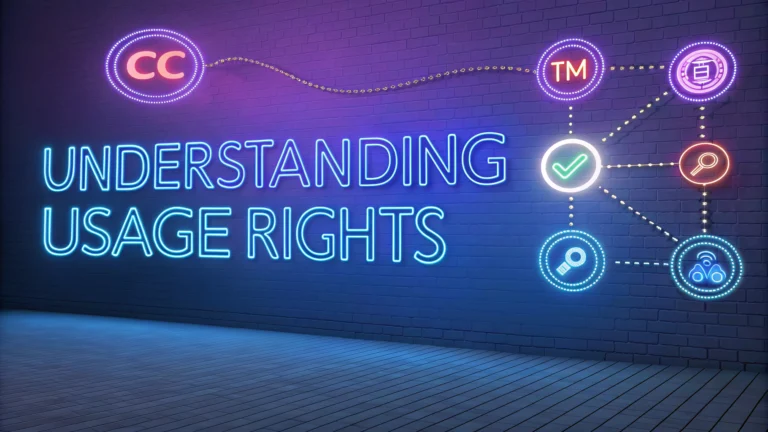Logo usage rights define who can legally use a logo design and how they can use it.
Understanding these rights helps protect both designers and clients from potential legal issues and misuse of intellectual property.
Types of Logo Usage Rights
- Exclusive Rights: Only one party can use the logo
- Non-exclusive Rights: Multiple parties can use the same logo
- Limited Rights: Usage restricted to specific purposes or timeframes
- Full Rights: Complete ownership and unrestricted usage
Common Usage Rights Terms
A standard logo usage agreement should address these key points:
- Geographic limitations
- Duration of use
- Modification permissions
- Transfer rights
- Digital and print usage
- Resale rights
Rights Transfer Process
- Create a written agreement
- Specify all usage terms clearly
- Include payment details
- Have both parties sign
- Keep copies for records
Logo File Requirements
| Format | Use Case |
|---|---|
| AI/EPS | Print materials, scaling |
| PNG | Digital use, transparency needed |
| JPG | Web use, small file size |
Legal Protection Tips
- Register your logo trademark with the USPTO (www.uspto.gov)
- Document all logo usage agreements in writing
- Include specific terms about logo modification rights
- Specify resolution requirements for different uses
- Address social media usage explicitly
Red Flags to Watch For
- Vague or missing usage terms
- Unclear ownership rights
- Missing file format specifications
- Undefined geographic restrictions
- Incomplete payment terms
Contact professional legal counsel for specific advice about logo usage rights and agreements (American Bar Association).
Best Practices for Logo Usage
- Maintain consistent proportions
- Use approved color variations only
- Keep minimum size requirements
- Preserve clear space around logo
- Follow brand guidelines strictly
Common Logo Usage Violations
- Unauthorized color changes
- Improper scaling
- Adding unapproved effects
- Using outdated versions
- Placement in inappropriate contexts
International Considerations
- Different trademark laws by country
- Cultural implications of design
- Local registration requirements
- International usage restrictions
- Cross-border enforcement
Digital Rights Management
Online Platforms
- Social media guidelines
- Website usage parameters
- E-commerce restrictions
- App integration rules
Conclusion
Proper management of logo usage rights is essential for maintaining brand integrity and legal compliance. Clear agreements, proper documentation, and understanding of usage parameters protect both creators and users. Regular review of usage rights and staying current with digital requirements ensures long-term brand protection and value.
For ongoing compliance, maintain:
- Updated usage agreements
- Current file formats
- Regular rights audits
- Clear communication channels
FAQs
- What are usage rights in logo design and why are they important?
Usage rights determine how, where, and for how long a logo can be used. They are crucial because they protect both the designer’s intellectual property and define the client’s legal permission to use the design. - What’s the difference between exclusive and non-exclusive rights for logo designs?
Exclusive rights mean the logo is solely owned by the client and cannot be sold to others. Non-exclusive rights allow the designer to sell the same or similar design to multiple clients. - Do I automatically own the copyright when I purchase a logo?
No, purchasing a logo doesn’t automatically transfer copyright ownership. Copyright remains with the designer unless explicitly transferred through a written copyright assignment agreement. - What are the standard usage rights included in most logo design contracts?
Standard usage rights typically include permission to use the logo on business materials, websites, social media, advertising, and marketing materials within a specified territory. - Can I modify a logo once I’ve purchased usage rights?
Most usage rights agreements restrict modifications without the designer’s permission to maintain design integrity and copyright protection. - What’s the difference between commercial and personal usage rights?
Commercial rights allow the logo to be used for business and profit-making purposes, while personal rights limit usage to non-commercial, personal projects. - How long do logo usage rights typically last?
Usage rights can be perpetual (unlimited duration) or limited to a specific time period, depending on the agreement between designer and client. - What happens to usage rights if my business expands to new territories?
If usage rights are geographically limited, you’ll need to negotiate additional territory rights with the designer for expanded use. - Can I transfer my logo usage rights to another company?
Transfer of usage rights depends on the terms in your agreement. Many contracts require designer approval for rights transfer or sale. - What documentation should I receive regarding logo usage rights?
You should receive a written agreement specifying usage terms, limitations, territories, duration, and any transfer of copyright ownership if applicable.








